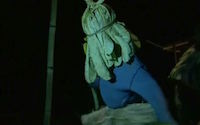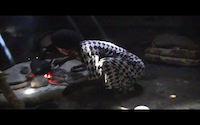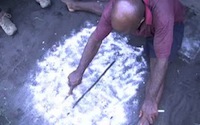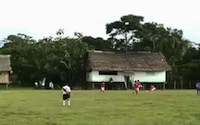The Vilela language has been considered extinct or near extinct. During the sixties and the seventies, Clemente Balmori and Elena Lozano, both linguists from the University of La Plata, located some Vilela consultants in the Chaco province and elicited relevant linguistic information.
In the last thirty years this language has shifted to Toba, Mocovi, and Spanish. Nowadays, only a few Vilela speakers manifest varying degrees of competence in their native language.
Although there is scant information about the Vilela language, published sources in the twentieth century (Balmori 1967 and Viegas Barros 2001, among others) claim that it belongs to the Lule-Vilela linguistic family.
The Vilela language manifests a low degree of agglutination, compared to other Chaco languages, as well as a marked tendency to suffixation (Furlong Cardiff 1939 and Lozano 1970, 1977). This characteristic has led some authors to link Vilela with the Andean languages (Lafone Quevedo 1895).
According to Lozano, “The Vilela verb has seven inflexional categories: Person, mood, tense, aspect, negation, number, and interrogation” (1977:113-114; our translation). Her description of the phonological system comprises 29 phonemes. Consonants are distributed in a series of voiced and voiceless stops, a series of glottalized stops; a series of voiceless fricatives, a trill, a voiceless and a voiced lateral, a bilabial and an alveolar nasal, a glottal stop, and two glides. Vilela has a five-vowel system: two unrounded (/i/, /u/) and three rounded (/e/, /a/, /o/) vowels.
References
- Balmori, Clemente Hernando (1959). Doña Dominga Galarza y las postrimerías de un pueblo y una lengua. Revista de la Universidad. La Plata. 9: 85-98.
- Balmori, Clemente Hernando (1967). Ensayo comparativo Lule-Vilela: sufijos -p y -t con un breve texto Vilela. Estudios de área lingüística indígena. Buenos Aires: Universidad de Buenos Aires, Facultad de Filosofía y Letras, Centro de Estudios Lingüísticos. 9-32.
- Fontana, Luis J. (1977 [1881]). El Gran Chaco. Buenos Aires: Solar/Hachette.
- Furlong Cardiff, Guillermo (1939). Entre los Vilelas de Salta. Buenos Aires: Academia Literaria del Plata.
- Lafone Quevedo, Samuel (1895). La lengua Vilela o Chulupí. Estudio de filología chaco-argentina fundado sobre los trabajos de Hervás, Adelung, y Pelleschi. Boletín del Instituto Geográfico Argentino. Buenos Aires. XVI: 37-124.
- Llamas, A. de (1910). Uakambabelté ó Vilela. Lenguas indígenas aborígenes. Mi contribución primera al estudio de la historia antigua. Corrientes: Teodoro Heinecke.
- Lozano, Elena (1970). Textos Vilelas. La Plata: CEILP.
- Lozano, Elena (1977). Cuentos secretos vilelas: I La mujer tigre. VICUS Cuadernos. Lingüística, Vol.I: 93-116.
- Pelleschi, Giovanni (1886 [1881]). Eight months on the Gran Chaco of the Argentine Republic. London: Sampson Low, Marston, Searle & Rivington.
- Terán, Buenaventura (1995). Figuras del Panteón Vilela. Humanismo Siglo XX. Estudios dedicados al Dr. Juan Adolfo Vázquez, J. Schobinger (comp.):187-195. San Juan: Editorial Fundación Universidad de San Juan.
- Viegas Barros, J. Pedro (2001). Evidencias del parentesco de las lenguas Lule y Vilela. Colección Folklore y Antropología 4. Santa Fe: Subsecretaría de la Provincia de Santa Fe.







